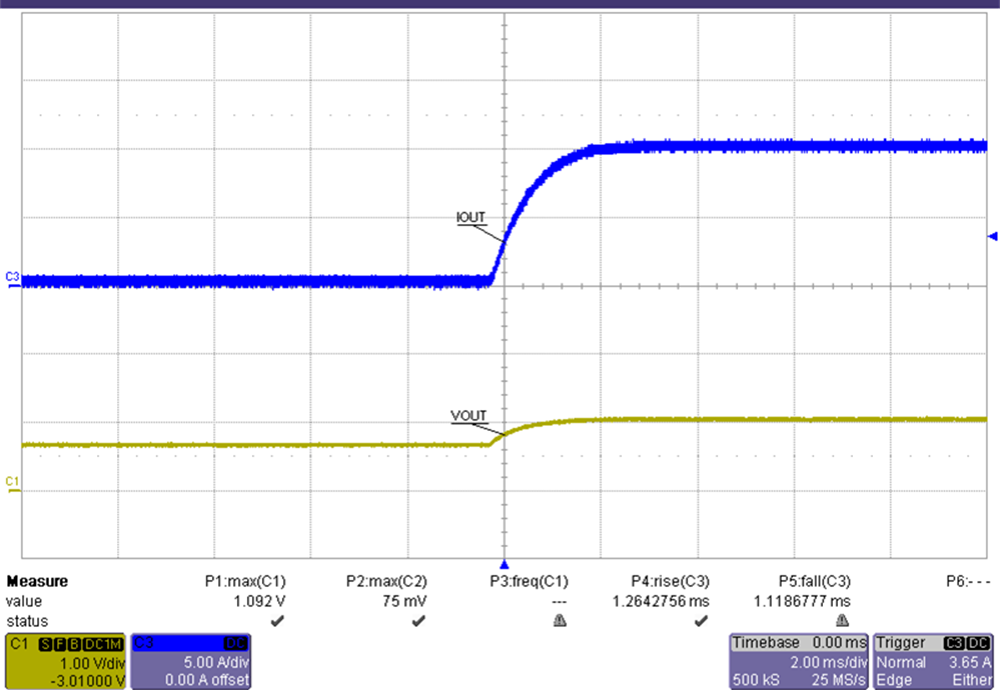TIDUEY0 November 2020
- Description
- Resources
- Features
- Applications
- 5
- 1System Description
- 2System Overview
- 3Hardware, Software, Testing Requirements, and Test Results
- 4Design and Documentation Support
- 5About the Author
3.4.5 Constant-Current Transient Response
The current rise time of synchronous buck is a function of L/R time. Larger power inductor and smaller path impedance limits the current speed. Figure 3-16 shows current transient response in charge mode tested at 10 mΩ. If the control loop is optimized at 10-mΩ output load, the current transient will be slower by 10 times when the circuit is tested at 100-mΩ load. It is important to optimize the loop with the battery load to achieve the desired result.
 Figure 3-16 Output Current Transient
Response.
Figure 3-16 Output Current Transient
Response.